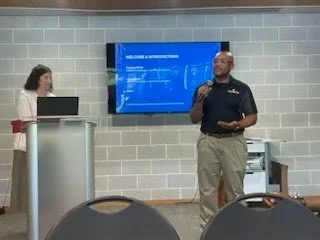There is more to that Rideshare Story.
Sign Up For The Newsletter
〰️
Sign Up For The Newsletter 〰️

How are you doing? I am busy reporting while also trying to safely get through this pandemic. I hope that you all are safe. Stay home, if you can, wear a mask; and wash your hands.
(Photo by Drew Graham on Unsplash)
The Intersection Magazine published a story about ride-share drivers (two Uber, one Lyft) and their experiences trying to make a living in a Mid-Atlantic economy that was shutting down during the spread of the virus. The more they worked, the less they earned, and they continually put themselves at risk of contracting the coronavirus and spreading it to their families. I won’t spoil the story, because it ends with a small twist. Click here.
However, I do want to share with you about one person’s experience. He did not want to be featured in that story but still shared his experience as an Uber driver when interviewed.
He is a white male, who lives in Virginia. When confirmed coronavirus cases started to rapidly increase in the region, he ceased working for the company. He was worried about contracting the virus and passing it on to his wife and children. As of today, the region has over 22,000 confirmed cases. His daytime job, which I will not mention, he told me, is enough to sustain his livelihood. His Uber earnings were used for family vacations. It was disposable income. However, his female cousin has a different story. Unlike him, driving for Uber is her full-time job. Quitting Uber would possibly put her in a financial vice grip. He said he felt bad for her and other drivers in similar situations.
Uber is trying to make things right, but…
On April 6 — the same day, The Intersection Magazine (the_intersect_mag) published “Driving During A Pandemic: Three women in the D.C. Metro area share their experience” — Uber announced that it started a Work Hub for its drivers. The hub is meant to connect Uber drivers with its other ride-share services and other jobs outside the company, potentially giving contractors, the company believes, an opportunity to make more of a sustainable income. Members can see job postings via the company’s app.
From the Uber Blog:
During this difficult period, drivers are more important than ever: every trip you’re providing now is an essential trip for your community. But with fewer people moving around, we know there are fewer trips available, and you’re earning less money driving. That’s why we’re introducing the Work Hub, a new way for you to find other work, whether with Uber or another company.
If Uber Eats is in your city, you can turn on delivery requests with a single tap in the Driver app. We’re also accepting signups for Uber Works, which connects people to shift work like food production, warehouse, and customer service in Chicago, Dallas, and Miami. And with Uber Freight, where carriers get paid for every load they deliver, we’re providing priority eligibility screening for drivers with a Class A Commercial Driver’s License.
As we respond to COVID-19, the Work Hub will also include opportunities outside of Uber. During this challenging time, we will be teaming up with companies that are currently hiring, like Domino’s, Shipt, CareGuide, and others, to get drivers connected to jobs. We’re also including links to job postings for other companies. We’ll continue to add new partnerships and listings to the Work Hub as we find more opportunities for you, so check the Driver app regularly for updates.
Before Uber had created this Work Hub, drivers were already switching to UberEats to make more money. When I had access to the Uber/Lyft Facebook group, other drivers were very frustrated with the Uber Eats experience. After trying it out, some found that it wasn’t earning them more money — so they ceased doing it. Others thought it was worth it. Both Angela Amina and Kristie Taylor switched to delivering food for UberEats when driving wasn’t working out. However, like the other drivers’, they eventually quit. Taylor began driving for Instacart. Amina just stopped driving for Uber. She wanted to put her creative energy toward building a T-shirt business. I followed up with Taylor to see how she was doing.
“I’m concentrated on Instacart. The pay is so much better,” Taylor said. “People are scared…to go to the grocery store or even out of their homes — so yes, the tips have been excellent so far. But, I do miss talking to my passengers when I was driving. That was the joy of Uber: making personal connections, and sharing stories while you drove. With Instacart, I’m just all on my own.”
Over the last couple of weeks, rideshare contractors in the D.C. metro area have continually applied for unemployment benefits. However, due to the high number of applications, unemployment websites have crashed and had to be rebooted. See here, here, and here.
Here is what the New York Times wrote:
No state unemployment system could have handled this smoothly. State offices have fielded more applications in a single day than they did in the worst weeks of the Great Recession. Adding $600 to every payment has been no small task. And Congress effectively asked states to create an entirely new benefit, expanding aid to self-employed workers whose wages can’t be verified on a pay stub. As of Wednesday, just 21 states had begun that program.
Good Read
Veena B. Dubal, associate professor of law at the University of California, Hastings College of the Law, wrote a phenomenal piece on the history of the gig economy for Logic Magazine.
An excerpt: Cabbies, however, saw Uber and Lyft as well-financed corporate continuations of the taxi companies that had long subjugated them. “This isn’t about technology,” Mark, a long-time taxi worker and advocate told me in 2013. He explained that, for the previous few years, San Francisco taxi drivers had already been using an app called Cabulous, which essentially did what Uber and Lyft were doing. “They claim they’re innovative and new, but we already have this technology,” he went on. What was different, Mark described, was that Uber and Lyft had “a new exploitative business model,” though it was just “one step removed from the leasing model that the taxi companies have been using for years.”




Baltimore, Maryland -- While at the Maryland Lynching Memorial Project’s 8th annual conference, two of the Maryland Lynching Truth and Reconciliation Commission’s commissioners showed attendees, in the form of a slide show, a list of recommendations for a statewide policy to help remedy and repair communities injured by lynchings and racial discrimination.